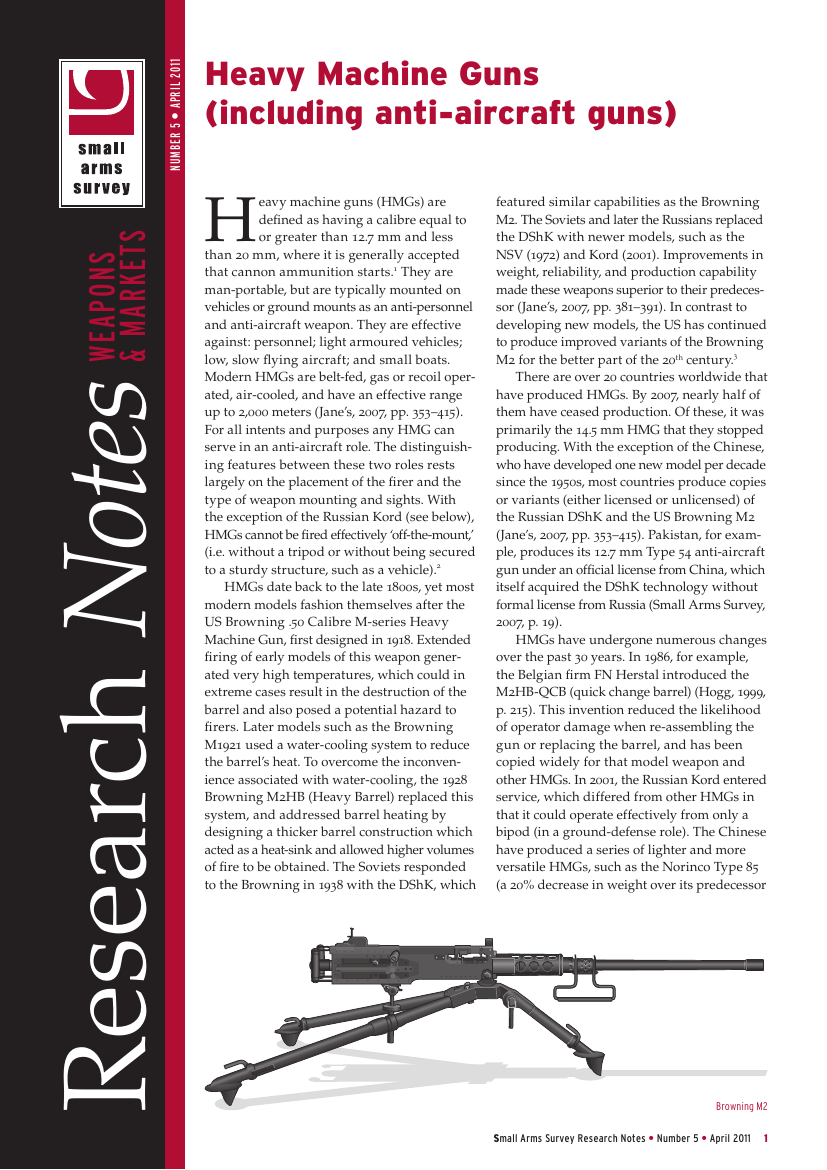
Heavy Machine Guns (including anti-aircraft guns) (Research Note 5)
The fifth in the Small Arms Survey's series of Research Notes provides a brief overview of heavy machine guns (HMGs), defined as having a calibre between 12.7 mm and 20 mm.
These light weapons are man-portable, but are typically mounted on vehicles or ground mounts as an anti-personnel and anti-aircraft weapon. Effective against personnel; light armoured vehicles; low, slow flying aircraft; and small boats, modern HMGs are belt-fed, gas or recoil operated, air-cooled, and have an effective range up to 2,000 meters.
While they date back to the late 1800s, most modern models fashion themselves after the US Browning .50 Calibre M-series Heavy Machine Gun, first designed in 1918.
HMGs have undergone numerous changes over the past 30 years, such as the introduction of the quick change barrel by the Belgian firm FN Herstal in 1986. In 2001 the Russian Kord entered service, as the first HMG that can operate effectively from only a bipod (in a ground-defence role).
These weapons have made their way into the arsenals of numerous non-state actors including pastoralist groups. Means of acquisition include leakage from government-held stockpiles through seizure and corruption, as well through seizure from contingents within peace operations.
Have your say about Small Arms Survey publications and products: take 5 minutes to fill out our questionnaire.